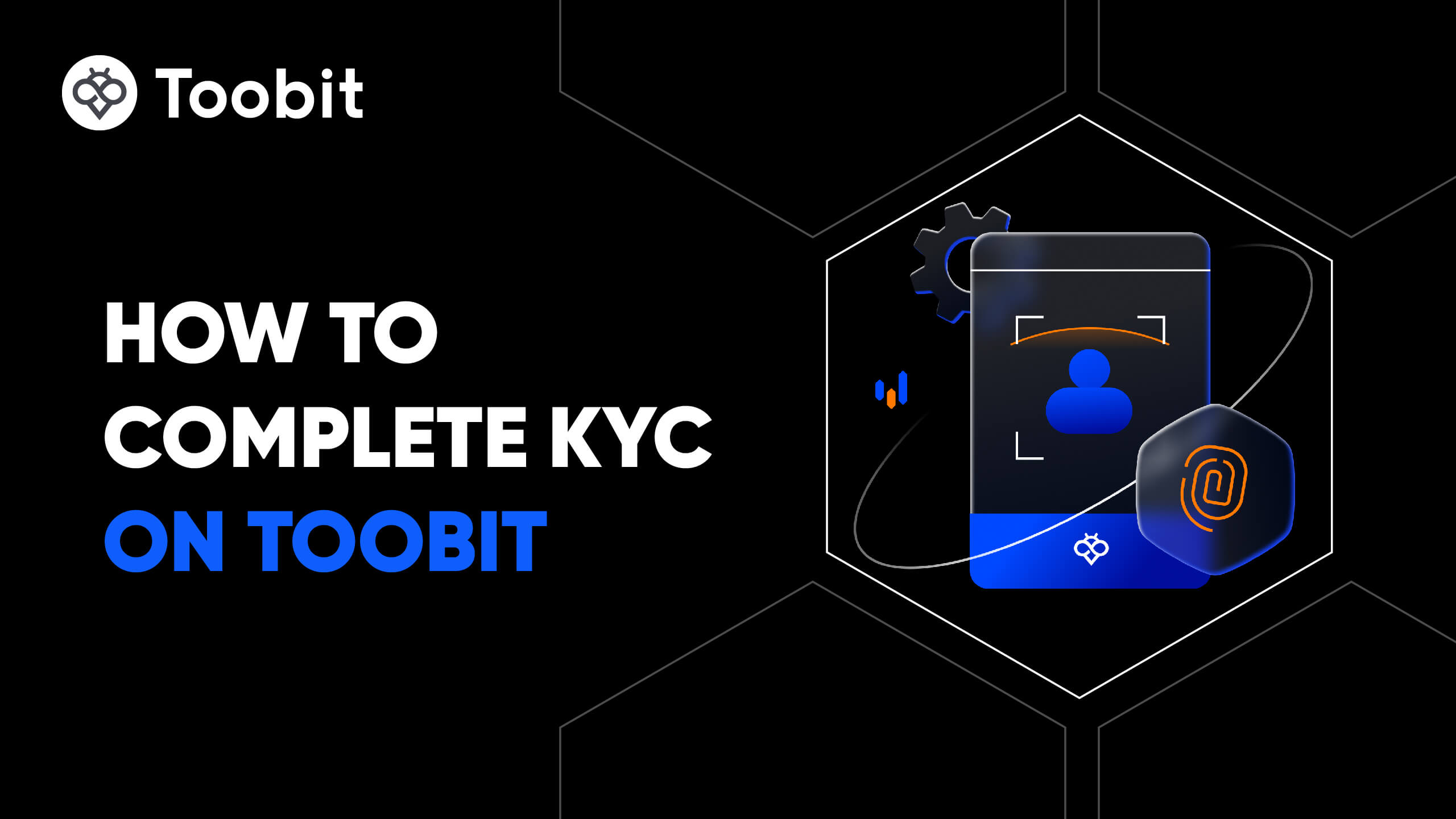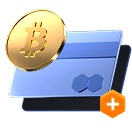Obol price
OBOLObol market info
Live Obol price today in USD
How much is 1 OBOL worth in ?
About Obol(OBOL)
Obol price history
Why does the price of Obol always fluctuate?
What factors affect the performance of Obol prices?
Global Obol prices
How to buy Obol
Create your free Toobit account
Sign up on Toobit with your email address/mobile phone number and country of residence, and create a strong password to secure your account.
Verify your identity
Complete identity verification by submitting your personal details and a valid photo ID.
Add a payment method and buy Obol (OBOL)
Add a credit/debit card or bank account after verifying your Toobit account. Use multiple payment options to buy Obol on Toobit.
Trade OBOL perpetual futures
After signing up on Toobit and buying USDT or OBOL tokens, you can start trading derivatives, including OBOL futures and margin trading to increase your income.
Join OBOL copy trading with lead traders
After signing up on Toobit and successfully buying USDT or OBOL tokens, you can also start copy trading by following Lead Traders.
Where can I buy Obol?
Buy crypto on the Toobit app
Sign up within minutes to purchase crypto via credit card or bank transfer.
Trade on Toobit
Deposit your cryptocurrencies to Toobit and enjoy high liquidity and low trading fees.
Video section — quick verification, quick trading

How to complete identification on Toobit and protect yourself from fraud
- 1.Log in to your Toobit account.
- 2.If you're new to Toobit, watch our tutorial on how to create an account.
- 3.Click on the profile icon in the upper right corner of the navigation bar, then tap on Identification page.
FAQ About OBOL
Why does OBOL price always fluctuate? What factors affects the performance of OBOL prices?
Like any other asset, OBOL's price movements are primarily shaped by the forces of supply and demand. These can be impacted by key developments such as block reward halvings, protocol upgrades, or hard forks. External factors, including regulatory changes, adoption by businesses or governments, exchange security breaches, and other significant events, can also play a major role in shaping OBOL's value. As a result, its market capitalization can experience rapid fluctuations.To predict OBOL's future performance, many traders keep an eye on the activity of "whales"—entities or individuals holding substantial amounts of OBOL. Given the relatively small size of the OBOL market compared to traditional markets, these whales can exert considerable influence on price movements with their trading activities.When is a good time to buy OBOL? Should I buy or sell OBOL now?
A good time to buy depends on several factors:Market Sentiment & TrendsLook for signs of market consolidation or an uptrend. Buying during market dips (after thorough research) can be beneficial if you believe in the long-term potential of OBOL.Avoid buying when the price has spiked due to hype, as this can often lead to a correction.Technical IndicatorsSupport Levels: Buying near strong support levels where the price historically stabilizes can reduce risk.Oversold Signals: Tools like the RSI can help you identify when OBOL is oversold, which may indicate a potential reversal to the upside.Fundamental DevelopmentsInvest before major upgrades, partnerships, or positive news that could drive adoption and increase value.Consider macroeconomic conditions, as global trends like inflation or regulatory shifts can impact the broader crypto market.Should You Buy or Sell OBOL Now?To decide, evaluate these key aspects:Buying ConditionsBullish Momentum: If the market is showing clear signs of recovery or growth, it may be an opportunity to enter.Long-Term Vision: If OBOL aligns with your investment thesis and you see long-term potential, current volatility might be less of a concern.Selling ConditionsTarget Reached: If OBOL has hit your profit target or a price point you set as a sell trigger, it may be time to exit.Bearish Signs: If the market is losing momentum or external factors (e.g., regulatory challenges or declining adoption) are creating sustained downward pressure, selling might protect your capital.Strategic TipsDollar-Cost Averaging (DCA): Buy small amounts of OBOL at regular intervals to minimize the impact of volatility.Portfolio Balance: Don’t put all your funds into OBOL. Maintain a diversified portfolio to mitigate risks.Stop-Loss Orders: Use stop-loss orders to protect against significant downturns.If OBOL is demonstrating strong fundamentals, low valuation relative to its potential, and a supportive market environment, it could be a good time to buy. Conversely, if you believe the current price is overextended or market conditions are unfavorable, selling or holding might be the better choice.Is OBOL a good investment?
Determining whether OBOL is a good investment depends on several factors, including your financial goals, risk tolerance, and the specifics of OBOL's fundamentals and market position. Here's a structured approach to help you evaluate its investment potential:1. Understanding OBOL's FundamentalsUse Case: What problem does OBOL solve? A cryptocurrency with a strong, unique utility often has better long-term prospects.Technology: Assess the strength of its blockchain, scalability, transaction speed, and security features.Team and Development: A strong, transparent team with a clear roadmap increases trust and long-term viability.2. Market Position and CompetitorsAdoption: How widely is OBOL being adopted by users, businesses, and developers?Competition: Does OBOL face strong competition from similar projects, and what sets it apart?Market Share: Look at its market capitalization and trading volume compared to other cryptocurrencies.3. Price Performance and VolatilityHistorical Trends: Analyze OBOL's past price movements. Has it shown consistent growth, or is it highly volatile without a clear upward trend?Current Valuation: Is OBOL undervalued or overvalued compared to its peers? Tools like the Price-to-Sales (P/S) ratio or Network Value to Transactions (NVT) can help.4. External FactorsRegulatory Environment: Is OBOL operating in a regulatory-compliant manner? Future legal issues could impact its price.Market Trends: Broader cryptocurrency trends and macroeconomic conditions, such as inflation or rising interest in blockchain technology, can influence OBOL's growth.5. Risks to ConsiderMarket Volatility: Cryptocurrencies are highly volatile, and OBOL is no excOBOLion. Be prepared for significant price swings.Adoption Risk: If OBOL fails to gain traction, its value could stagnate or decline.Security Risks: Hacks, scams, or technical vulnerabilities could impact its credibility and price.Final ThoughtsOBOL could be a good investment if:You believe in its long-term use case and technological foundation.It has strong adoption metrics and a competitive edge.You are prepared to manage the inherent risks of cryptocurrency investing.What will the OBOL price be in 2030?
Forecasts for 2030 suggest that OBOL will experience a significant growth, with expected fluctuation ranging from $ 0.739214 to $ 1.07133. Investors might anticipate a potential ROI of 359.49%, aligning with a bullish outlook for the year.What is OBOL?
Obol is reimagining the backbone of Web3 by distributing, decentralizing, and democratizing critical digital infrastructure—starting with Ethereum and expanding across the broader decentralized ecosystem. At the heart of Obol’s vision is the belief that the infrastructure securing blockchains should be just as decentralized and resilient as the protocols it supports.Obol is building the foundational layer for Layer 1 chains, Layer 2 networks, Decentralized Physical Infrastructure Networks (DePIN), Actively Validated Services (AVS), and emerging AI agents—offering a robust, modular stack that enables secure, fault-tolerant, and highly-performant validator infrastructure.🌐 A Global Collective of Decentralized OperatorsThe Obol Collective represents the world’s largest decentralized validator operator network. With over 800+ distributed operators across the globe, Obol's ecosystem currently secures more than $1 billion in digital assets on Ethereum mainnet through its innovative Distributed Validator Technology (DVT).Obol’s Distributed Validators (DVs) allow multiple independent node operators to jointly manage a single validator instance. This approach eliminates single points of failure, enhances uptime, and drastically reduces the risk of slashing—resulting in more secure, performant, and resilient staking operations. ✅ Why it matters: DVs unlock institutional-grade performance while preserving the decentralization ethos of Ethereum. Whether you're a solo staker or part of a staking-as-a-service provider, Obol allows you to participate in securing the network without compromising on risk or rewards. 🧱 The Obol Stack: Infrastructure for the Modular Web3 EraBeyond DVs, Obol has built a comprehensive suite of tools known as the Obol Stack—a plug-and-play framework designed to simplify the deployment and management of Ethereum validators, AVS nodes, AI agents, and decentralized infrastructure components. Plug & Play Deployment: Easily spin up secure, distributed validator setups or infrastructure nodes with minimal overhead. Built for Modularity: Supports Ethereum L1, L2s, DePINs, rollups, and new forms of programmable infrastructure like AI agents and AVSs. Interoperable by Design: Designed to be integrated across decentralized systems, enabling seamless connectivity and resilience. 🔭 From Ethereum to Everything: The Obol VisionObol isn’t just scaling Ethereum’s validator layer—it’s building the infrastructure layer for a fully decentralized internet. As Web3 matures and modular blockchains become the norm, Obol is positioning itself as the security and performance layer for everything from decentralized AI to global edge compute networks.Whether you're launching a new blockchain protocol, building a decentralized service layer, or coordinating infrastructure across jurisdictions, Obol delivers a trust-minimized, high-availability backbone to power the decentralized systems of tomorrow.Obol is more than a validator network—it’s a movement toward a more resilient, inclusive, and democratized digital future. Join the Obol Collective and help shape the next era of decentralized infrastructure.How to Buy OBOL?
How to Buy OBOL on Toobit: A Step-by-Step GuideStep 1: Create an Account on ToobitTo start buying OBOL, visit Toobit and sign up for an account. Follow the registration process by entering your details and completing the account setup.Step 2: Verify Your Identity (Optional)While verification is not mandatory for all transactions, completing it can provide higher withdrawal limits and enhance account security. Refer to our How to Complete Identification on Toobit guide for step-by-step instructions.Step 3: Deposit FundsAdd funds to your Toobit account. You can deposit using credit/debit cards or transfer cryptocurrency from your external wallet. Ensure your account balance reflects the deposit before proceeding.Step 4: Navigate to the Markets SectionOnce your account is funded, go to the "Markets" section on the platform. This is where you can browse and search for OBOL. You can also read our How to Buy Crypto on Toobit guide for more information.Step 5: Purchase OBOLFind OBOL in the list of available cryptocurrencies. Select it, enter the amount you wish to purchase, and confirm the transaction.How to Withdraw OBOL on Toobit?
You can withdraw OBOL and other crypto tokens into USDT here on Toobit. Withdrawing OBOL from Toobit is a simple process that allows you to transfer your funds to an external wallet or exchange. You can also convert your OBOL to USDT (Tether) directly on the platform for added flexibility. Follow these steps to withdraw your OBOL securely and efficiently:Step 1: Log in to Your Toobit AccountStart by logging into your Toobit account using your credentials. Ensure you have completed any necessary identity verification to access full withdrawal features.Step 2: Navigate to the Wallet SectionFrom the dashboard, go to the ‘Wallet’ or ‘Assets’ tab. This section displays your current crypto balances, including your OBOL holdings.Step 3: Select OBOL for WithdrawalLocate OBOL in your wallet list. Click on the ‘Withdraw’ button next to OBOL. If you prefer to withdraw in USDT, you can first convert your OBOL to USDT through Toobit's trading platform.Step 4: Enter Withdrawal DetailsEnter the destination address for your OBOL. This could be an external OBOL wallet or another exchange address. Double-check the address to ensure accuracy, as crypto transactions are irreversible. Specify the amount of OBOL you wish to withdraw. You will see the network fees and the estimated time for the transaction.Step 5: Confirm and AuthenticateReview the withdrawal details carefully. Complete any two-factor authentication (2FA) steps for added security. Once confirmed, submit the request.Step 6: Track Your WithdrawalAfter submitting, you can monitor the status of your withdrawal in the ‘Withdrawal History’ section. Withdrawals typically process within minutes, depending on network congestion.By following these steps, you can seamlessly withdraw your OBOL or convert it to USDT on Toobit, ensuring quick and secure access to your funds.Read our How to Withdraw Crypto on Toobit guide for more information.


